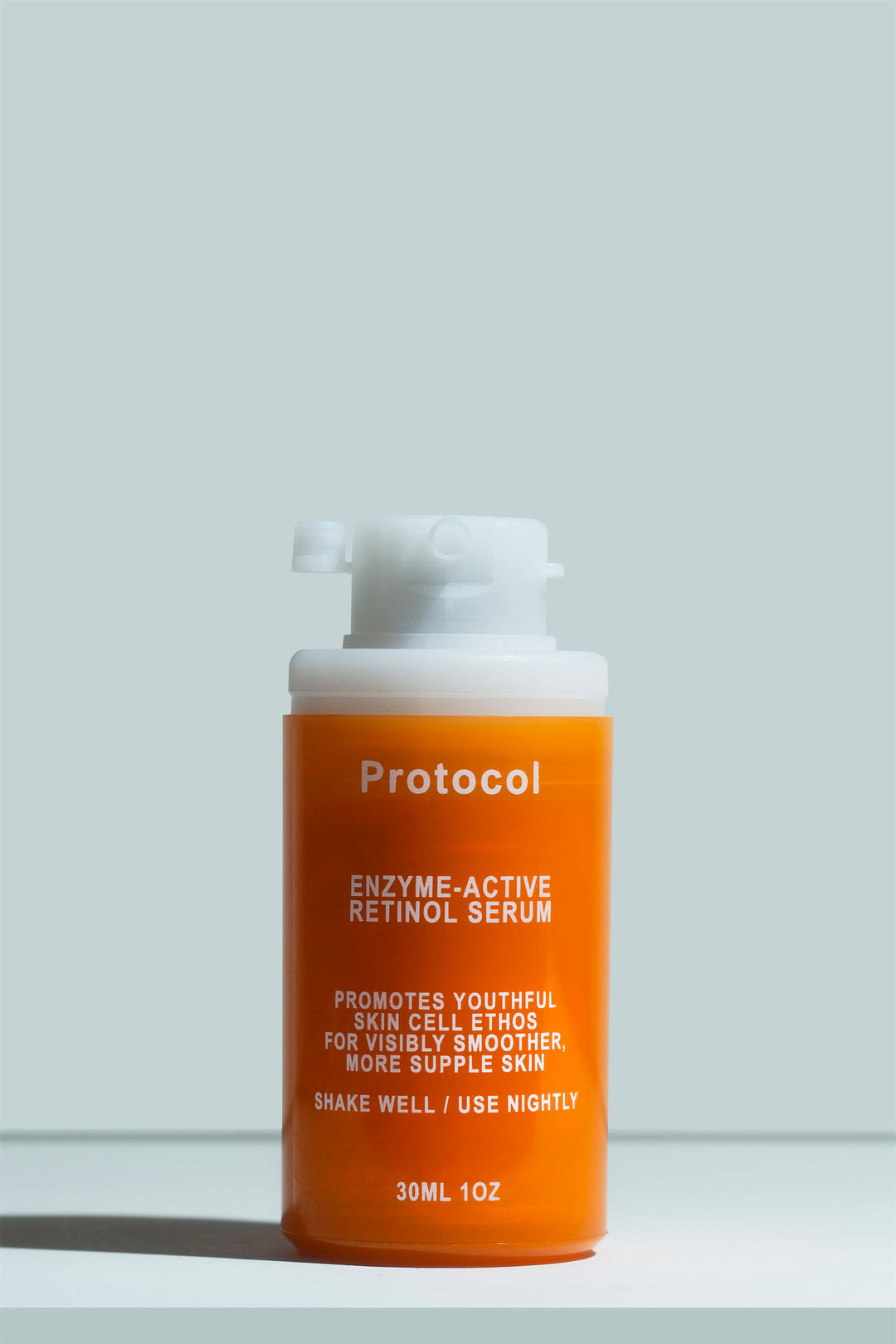Slugging 101: What Does Slugging Do For the Skin?


Slugging is the worst-named skincare trend, but it’s a phenomenal practice for deep skin hydration, plumpness, and glow.
If you’re not familiar with the term, slugging means to apply a thick layer of petrolatum or a petrolatum-based balm to the skin, usually at the end of your skincare routine in the evening.
It’s a powerful way to moisturize the skin, but it’s not necessarily the most pleasant.
In this post, we’ll explain how slugging works, what it does for your skin, and help you figure out if it’s right for you.
Spoiler alert: We also devised a way to make slugging a lot more cosmetically elegant. Read on to find out how.
What is slugging?
Slugging means to apply a thick layer of occlusive ointment to your skin at night, usually as the last step in your skincare routine. The most popular products for slugging are petrolatum-based ointments like Vaseline and Aquaphor.
Once you’re done, your skin should look like it’s covered in a layer of goo, kind of like a slug’s mucus.
Slugging is usually part of a multi-step skincare routine, where you layer on toners, essences, serums, and moisturizers, with the thick “slugging” ointment as the final step.
That said, we recommend a different method that’s less time-consuming but ultra-effective.
1. First, supercharge your skin by saturating it with water - a shower is the simplest way to do this.
2. Immediately after, apply a moisturizer that includes a blend of water, hydrating agents, and occlusives.
3. Finally, apply the heavy-hitting all-occlusive ointment to seal everything in.
Recently, some folks are also calling it the “glazed donut trend” which is a more generic term for going to bed with very shiny skin (which can occur with slugging).
What does slugging do for your skin?
To understand slugging, you need to understand occlusion. Occlusives are moisturizing skincare ingredients that create a seal over the skin.
You know how oils repel water? That’s how occlusives work. They don’t let water come in or out of the skin.
Once you apply an occlusive, any moisture in your skin is effectively locked in. That’s why it’s a final skincare step - you layer your occlusive after you’ve already applied some water-rich products.
Important: Don’t attempt to slug your skin when it’s dry and bare. Slugging works because the occlusive goes over water-based skincare products. Your skin has to be saturated with water and hydrating agents first, or there won’t be any moisture to lock in.
Usually, users apply hydrating serums before slugging, but there’s another way to achieve optimal skin hydration. Simply soak your skin in water directly (e.g., by taking a shower). As long as you “slug” within a couple of minutes, that occlusive will seal the water into your skin.
Should I try slugging?
Maybe! Slugging is always beneficial for dehydration, which can happen regardless of skin type. Dehydration is when the skin struggles to retain water (you can learn more about this in our guide to transepidermal water loss).
All skin types may benefit from slugging, but there are still a few things to keep in mind:
Slugging for dry or sensitive skin
If your skin is dry or sensitive it’s probably more prone to dehydration. In that case, you should definitely try slugging!
Your skin will benefit from the powerful moisture-binding ability of this practice. It can be wonderful in the winter, as the air becomes dry, or if your skin has become over-sensitized.
Slugging for oily skin or normal skin
If your skin is oily or normal but largely well-hydrated, slugging might not be necessary. A solid moisturizing skincare routine can be enough all on its own, especially if you don’t expose your skin to harsh cleansers or intense acne medications.
That said, slugging for oily skin can be useful when your skin is dehydrated and needs quick repair.
Slugging for acne-prone skin
In skincare, just because something seems heavy or greasy doesn’t mean it’ll necessarily clog your pores! For the most part, petrolatum-based products are considered non-comedogenic so they shouldn’t cause breakouts.
When you have acne-prone skin, your instinct might be to use very light products or even harsh cleansers that totally strip your skin of oil, but that does a lot of harm and zero good. There’s a real correlation between a damaged moisture barrier and an increase in acne lesions, likely due to just how hard it is for the skin to function optimally when it’s dehydrated.
That’s why slugging can be incredibly useful for acne-prone skin, especially if your skin also feels tight or looks flakey. It can also alleviate some of the dryness or irritation from prescription anti-acne treatments.
That said, what will or won’t break you out can be highly individual. It’s not easy to judge what will cause breakouts for who. If you have acne-prone skin, always try patch-testing new skincare. That means applying the product to a patch of skin for a few days to see if it’ll irritate or break you out before rubbing it all over your face.
How often should I try slugging?
The one tip we always come back to is this: listen to your skin.
Your nightly skincare routine should be moisturizing enough for your skin’s needs. That can differ from person to person and even season to season. Maybe you’ll find yourself wanting to slug every night during winter and not at all in the summer.
Slugging is profoundly moisturizing and it can be very reparative. When your skin is dehydrated or compromised, try slugging for a few days in a row until you feel like you’re back to normal.
When your skin is in good shape, though, slugging can be overkill. It can be nice (but not necessary) a few times a week, especially if you want your skin to look extra glowy the following day.
Can you use Vaseline for slugging?
Vaseline is the classic choice for slugging because it’s so simple and affordable. Vaseline is pure, cosmetic-grade petrolatum, which is one of the most effective occlusives in skincare.
That said, the texture isn’t particularly nice, and some users do experience breakouts as a result of using it. If that’s not a concern for you, go ahead and give slugging a try!
If you’re oily or prone to breakouts, there are still ways to combat dehydration through occlusion. You can use silicone-based occlusives that aren’t quite so heavy and greasy. They’ll feel more pleasant on your skin while still sealing in moisture.
Slugging based on skin type
The science behind slugging is pretty sound. Plus, the way this technique keeps the skin all moist and dewy is quite lovely. When you slug at night, there’s a good chance you won’t need to moisturize again in the morning.
Remember to apply your slugging occlusive after your skin is already saturated with water. If you’re applying any lightweight or water-based skincare products, they should go on first.
That said, slugging can be a little gross, especially if you’re the kind of person who hates the feeling of oily products on their skin! That happens to be true for a lot of the members of our Lab Team, for instance.
That’s why we created Water Lock. It’s a light, silky ointment for people who hate the idea of slugging.
Think of it as a non-greasy option for slugging oily skin.
Instead of petrolatum, the star occlusive in this formula is dimethicone, which we combined with a few more moisture-locking molecules. The result is a non-comedogenic, silky formula with the most divine skin feel. It’s slippery-smooth but with a velvety texture that leaves the skin feeling soft and non-greasy, and yet completely hydrated.

There are a few other skin-loving ingredients in the Water Lock formula that provide a small element of direct hydration, like glycerin, panthenol, and hyaluronic acid.
Whether you decide to try slugging with simple, affordable Vaseline (which we suggest you definitely do!) or a more elegant formula like Water Lock, we think you’ll like the way it keeps your skin as moisturized as possible. Happy slugging!





